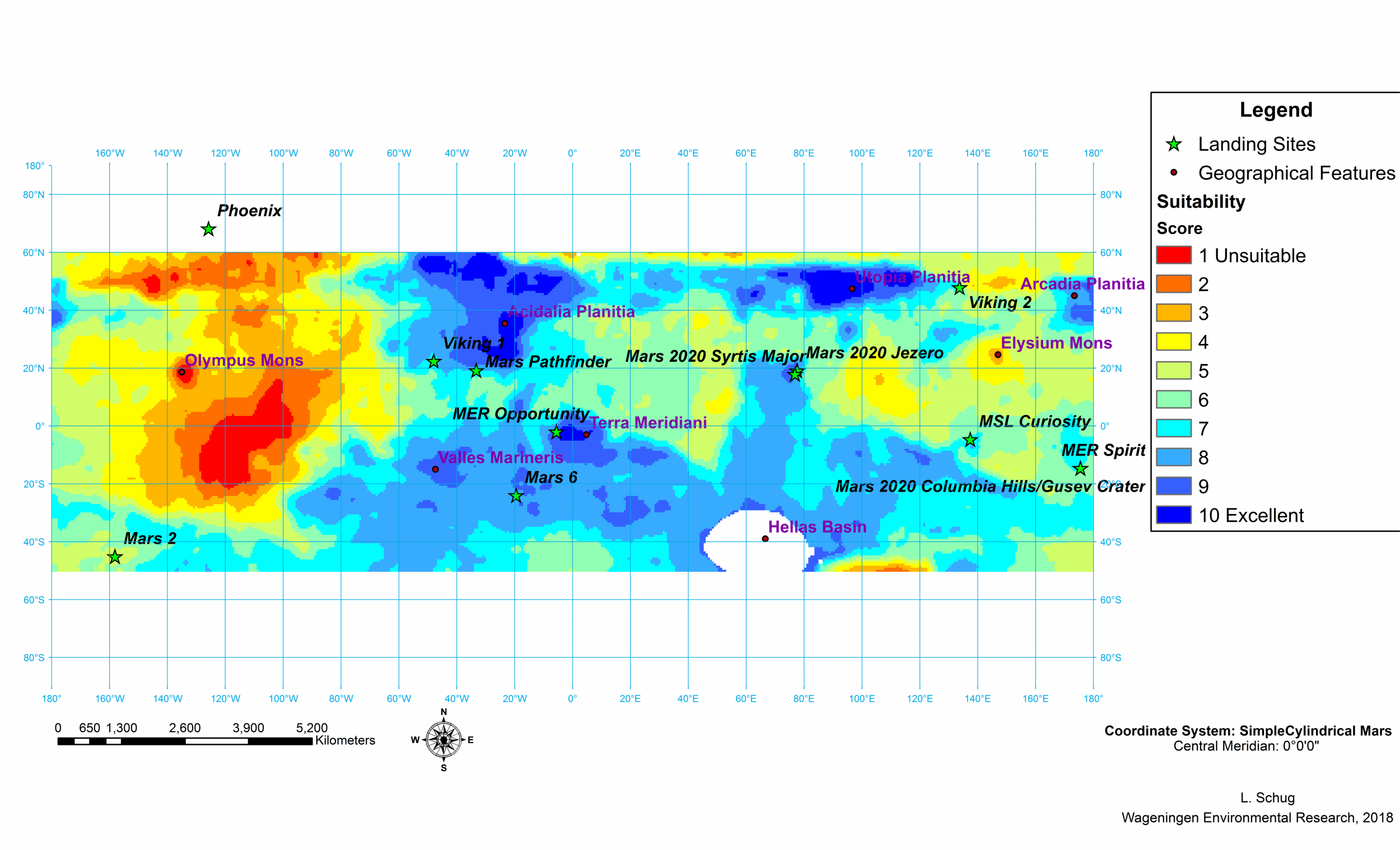
Starting a Mars colony will be dangerous business and difficult work because astronaut explorers will have to build their habitat and food on an inhospitable planet. But now there is a map to guide them.
Researchers have plotted out the locations on Mars that would be the most suitable place to settle down, based largely on what's in the local soil. Even though the crops that the pioneers grow to sustain themselves will live indoors, the humans will need to use Martian ice and regolith, according to Wageningen University & Research, which is in the Netherlands.
Regolith refers to the loose soil, dust and rock on a celestial body's surface, which cover the firmer material beneath.
A new 3D map shows where plants would be most at home on Mars.
In a video showing the planet-wide map, there are big red and orange splotches covering portions of the Martian surface—indicating landing sites that would be "unsuitable" for crops. But there are also large swaths of blue, to indicate the most favorable conditions for plants, and chunks of green, which note a middle ground between the two extremes.
"Some of the ideal landing places coincide with past and planned future landing sites," the university noted.
The spot where Mars Pathfinder touched down in 1997 is close to a region of blue and dark blue, and the same is true for the Opportunity rover, which landed in 2004 and is still operating. NASA launched the both of them.
Meanwhile Mars 2, the Soviet space probe sent up in the 1970s, landed in a location that would not be ideal.
The areas considered most suitable do not have a lot of heavy metals, radiation is not very high and the terrain is smooth.
"We see high temperatures or calcium levels and a relatively flat terrain as positive," researcher Line Schug said in the university statement.
Other soil elements taken into consideration included potassium, iron and silicon.
The data on the regolith contents and the terrain that the researchers used came from NASA.
The maps are tied to previous research the lead scientist, ecologist Wieger Wamelink, has done on growing crops on Mars. Wamelink mimicked Martian soil compositions in pots on Earth and grew crops from them and then tested to make sure they were edible. He and his team have grown radishes, tomatoes, peas, potatoes, carrots and green beans.
Uncommon Knowledge
Newsweek is committed to challenging conventional wisdom and finding connections in the search for common ground.
Newsweek is committed to challenging conventional wisdom and finding connections in the search for common ground.
About the writer
To read how Newsweek uses AI as a newsroom tool, Click here.








